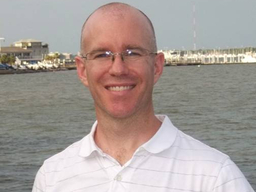Seminar: Ryan Casey, Towson University
Location
Information Technology/Engineering : 102
Date & Time
December 17, 2018, 12:00 pm – 12:50 pm
Description
Title: “The Effectiveness of Bioretention for Metal Retention and Toxicity Reduction of Copper Roof Runoff”
Abstract: Stormwater exports of copper (Cu) from sheet copper roofing materials have prompted potential regulatory actions to limit or ban new installations of those materials in some regions of the United States. Recent research evaluated the efficacy of bioretention stormwater control measures (SCMs) to attenuate the Cu concentrations from roofing materials, which are often an order of magnitude higher than Cu concentrations in roadway or parking lot runoff. A picnic shelter with a copper roof was constructed with two types of SCMs, bioretention planter boxes and biofiltration swales. Samples from 26 storms were collected using flow-weighted composite sampling. Total Cu in composite samples of the roof runoff ranged from 306 to 2863 mg L-1 and had a median concentration of 1087 mg L-1 . Attenuation in the planter boxes ranged from 85 to 99% and ranged from 93 to 99% in the swales. We applied the biotic ligand model (BLM) to assess whether laboratory toxicity bioassays with Daphnia magna could be predicted by measured variations in water chemistry. The swales and planter boxes decreased toxicity of Cu roof runoff in both the BLM results and laboratory bioassays. This study demonstrated that conventional bioretention practices, including planter boxes and swales, are capable of decreasing the risk of adverse effects from sheet Cu roof runoff to receiving systems. Finally, we evaluated whether bioretention media amended with commercial zeolite could further decrease Cu export from the system. In a field trial the zeolite amendment provided significantly lower Cu in effluent, but the overall decrease in Cu export may not be sufficient to justify the additional cost of the amendment.
Bio: Dr. Ryan Casey is a Professor of Chemistry and is currently Chair of the Chemistry Department. He joined Towson University and the Department of Chemistry in 2000 and has taught courses and mentored students in both the Department of Chemistry and the Environmental Science and Studies Program since his arrival. Dr. Casey’s research interests include the environmental chemistry and toxicology of urban stormwater including issues related to runoff from highway infrastructure and copper roofing materials. His research quantifies the distribution of trace metals, nutrients and salts in stormwater ponds and biota and evaluates the performance of bioretention stuctures for the mitigation of stormwater pollutants.
